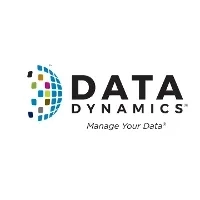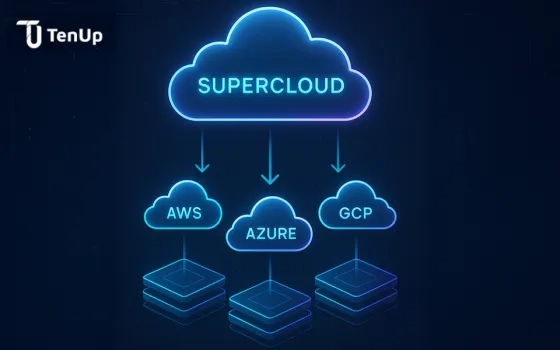Highlights:
- Cloud-Based Disaster Recovery (CBDR) is revolutionizing the healthcare sector by empowering resilience in the face of adversities and challenges.
- CBDR offers transformational ways to reshape the healthcare landscape, including cost efficiency, simplified management with DRaaS, reduce complexity, mitigate risks, robust security & compliance measures, resource allocation and more.
- Real-life examples of healthcare organizations, such as Johns Hopkins Medicine and Cleveland Clinic, showcase the power of cloud disaster recovery in navigating disasters and ensuring uninterrupted patient care.
- Microsoft Azure, in collaboration with Data Dynamics, provides a suite of powerful tools to aid healthcare organizations in disaster recovery endeavors, including Azure Site Recovery, Azure Backup, and Azure Virtual Machines.
In the ever-evolving landscape of healthcare, the ability to bounce back from adversities and challenges has become a paramount concern. The importance of maintaining seamless operations during unexpected disruptions, be it natural disasters or technological failures, cannot be overstated. This is where the revolutionary concept of Cloud-Based Disaster Recovery (CBDR) steps in as a game-changer for the healthcare industry. Empowering resilience like never before, CBDR has emerged as a lifeline for healthcare providers, ensuring they can withstand the storm and continue delivering critical services to those in need.
In this blog, we will explore the transformative impact of Cloud-Based Disaster Recovery on healthcare systems worldwide. We will delve into the ten key ways this innovative approach is reshaping the healthcare landscape, enabling organizations to safeguard sensitive patient data, maintain uninterrupted services, and optimize their response to emergencies. From fostering flexibility and scalability to enhancing data security and cost-effectiveness, CBDR is set to revolutionize how healthcare institutions tackle disasters, protect lives, and thrive in the face of uncertainty. Let’s explore.
Understanding Disaster Recovery in Healthcare: Navigating Stormy Waters
Before we dive into the cloud’s transformative powers, let’s take a moment to truly understand why disaster recovery is like a lighthouse guiding healthcare through treacherous seas. Imagine a scenario: a bustling hospital bustling with patients, dedicated healthcare professionals, and a seamless flow of critical information. Now, picture a sudden natural calamity like an earthquake or a man-made disaster such as a cyberattack striking. In the blink of an eye, the entire infrastructure could crumble.
Disasters have an uncanny ability to disrupt normal operations, leaving healthcare facilities vulnerable and, in some cases, completely incapacitated. Data loss is perhaps one of the most distressing consequences. Imagine years’ worth of patient records, treatment histories, and medical research vanishing into thin air. This loss isn’t just about digital files; it’s about valuable insights, hard-earned progress, and, most importantly, patient care.
Moreover, the aftermath of disasters can lead to service disruptions. Medical procedures might be postponed, appointments canceled, and patient care compromised. The ripple effect is enormous – it can impact patients’ well-being, healthcare professionals’ ability to provide timely treatment, and the overall reputation of the healthcare facility.
Disaster recovery – a concept that might have seemed like a footnote in the past – suddenly takes center stage. It’s not just a matter of bouncing back; it’s about building resilience. It becomes the lifeline that keeps healthcare institutions afloat and ensures they emerge even stronger. It’s the safety net that prevents patient data from slipping through the cracks. It’s the compass that guides healthcare providers through the chaos, ensuring they stay true to their mission of saving lives.
10 Challenges. 10 Resolutions: The Power of the Cloud in Healthcare Disaster Recovery
In the unpredictable world we live in, having a strong disaster recovery management process is a critical need for healthcare enterprises. But, like any great endeavor, it comes with its own set of challenges. Let’s dive into understanding why navigating the road to recovery can sometimes be as tricky as a maze and how the cloud can give enterprises the much-needed edge to help overcome them.
1. Cost: Establishing and maintaining a comprehensive disaster recovery infrastructure can be quite expensive. This involves investing in redundant hardware, software, data centers, and skilled personnel. For small and medium-sized businesses, allocating a sufficient budget for an effective disaster recovery plan can be a challenging task.
- The average cost of a data breach in the United States is $4.45 million in 2023.
- 60% of businesses that experience a data breach go out of business within two years.
- 43% of businesses do not have a disaster recovery plan in place.
Cloud-based Cost Efficiency: Cloud-based disaster recovery solutions eliminate the need for upfront capital expenditures on redundant hardware and data centers. Organizations can embrace a pay-as-you-go model, where they only pay for resources used during regular operations and scale up during disaster recovery events. By moving to the cloud, businesses can save on ongoing operational costs and reduce the need for dedicated IT staff to manage physical infrastructure.
2. Complexity: Disaster recovery management involves intricate technical and operational aspects. Setting up a robust system demands expertise in areas such as data backup, replication, failover mechanisms, network configurations, and testing. The complexity of these technologies can make implementation challenging.
- 70% of businesses say that disaster recovery is a complex and challenging process.
- 57% of businesses say that they lack the expertise to manage their own disaster recovery.
- 40% of businesses say that they have never tested their disaster recovery plan.
Simplified Management with DRaaS: Cloud service providers offer Disaster Recovery as a Service (DRaaS) solutions that simplify the setup and management of disaster recovery processes. DRaaS providers handle much of the technical complexity, such as data replication, server orchestration, and network configurations. This enables organizations to focus on their core business tasks while the cloud provider ensures an effective disaster recovery plan.
3. Resource Allocation: Implementing a comprehensive disaster recovery plan requires a dedicated team to manage and oversee the process. However, finding skilled professionals with expertise in disaster recovery can be difficult, leading to inadequate resource allocation for this critical task.
- 43% of businesses say that they do not have the budget to implement a comprehensive disaster recovery plan.
- 37% of businesses say that they do not have the staff resources to manage disaster recovery.
- 32% of businesses say that they do not have the time to implement a disaster recovery plan.
Expert Assistance from Cloud Providers: Leveraging cloud-based disaster recovery allows organizations to offload the responsibility of managing and maintaining the recovery infrastructure to the cloud provider’s experts. This enables the IT team to concentrate on core business activities while the cloud provider automatically scales resources as needed during recovery events without overprovisioning during regular operations.
4. Downtime Minimization: Minimizing downtime during a disaster is a key goal of disaster recovery management. Achieving this objective necessitates meticulous planning, continuous testing, and swift response mechanisms. Ensuring minimal downtime is a significant challenge for businesses of all sizes.
- The average cost of downtime for a small business is $5,000 per hour.
- The average cost of downtime for a medium-sized business is $25,000 per hour.
- The average cost of downtime for a large enterprise is $100,000 per hour.
Built-in Redundancy and High Availability: Cloud providers offer multiple data centers in different geographic regions, providing built-in redundancy and high availability. If one data center becomes unavailable due to a disaster, the system can automatically fail over to a secondary data center with minimal downtime. Continuous data replication and backup to the cloud ensure that the most recent data is available for recovery, reducing data loss during disaster events.
5. Data Security: Disaster recovery involves the replication and storage of sensitive data. Ensuring data security during backup, replication, and recovery processes is crucial. Implementing strong encryption, access controls, and secure transmission methods are essential but can be challenging to implement correctly.
- 43% of businesses have experienced a data breach in the past two years.
- 25% of businesses have experienced a data breach that resulted in the loss of sensitive data.
- 12% of businesses have experienced a data breach that resulted in the loss of customer data.
Robust Security Measures from Cloud Providers: Reputable cloud providers implement robust security measures, including encryption of data at rest and in transit, access controls, and multi-factor authentication. Compliance with industry standards like ISO 27001 and SOC 2 ensures a high level of data protection. Organizations can also choose cloud providers that offer private and isolated networking options to enhance the security of sensitive data further.
6. Testing and Validation: Regular testing and validation of the disaster recovery plan are critical to ensure its effectiveness. However, testing a real disaster scenario in a production environment can be risky and disruptive.
- 40% of businesses do not test their disaster recovery plan at least annually.
- 30% of businesses have never tested their disaster recovery plan.
- 20% of businesses have never tested their disaster recovery plan and do not plan to do so in the future.
Non-disruptive Testing with Cloud-based Disaster Recovery: Cloud-based disaster recovery allows organizations to create isolated test environments in the cloud. This enables non-disruptive testing of the recovery process without affecting production systems. Automated testing scripts can be set up to regularly simulate disaster scenarios and verify the effectiveness of the recovery plan.
7. Rapid Technological Advancements: Technology is constantly evolving, and new hardware, software, and cloud solutions emerge regularly. Keeping up with these advancements and ensuring that the disaster recovery system remains relevant and up-to-date can be challenging.
- The average lifespan of a technology product is 5 years.
- The average lifespan of a disaster recovery plan is 3 years.
- 60% of businesses say that they are not confident that their disaster recovery plan will be effective in the event of a disaster.
Continuous Updates from Cloud Providers: Cloud providers continuously update their services with the latest technologies and security features. Organizations benefit from these advancements without the need for extensive hardware upgrades or software updates.
8. Vendor Dependency: Many organizations rely on third-party vendors for disaster recovery solutions, especially cloud-based services. Vendor dependencies can introduce additional risks, as the organization relies on the vendor’s ability to deliver services effectively during a disaster.
- 40% of businesses rely on third-party vendors for disaster recovery solutions.
- 30% of businesses have had a vendor-related disaster recovery failure.
- 20% of businesses have had to pay a ransom to a vendor in order to recover their data.
Mitigating Risks with Multi-Cloud or Hybrid Cloud: By adopting a multi-cloud or hybrid cloud strategy, organizations can avoid being locked into a single cloud provider and distribute their disaster recovery assets across multiple providers for added redundancy.
9. Compliance and Regulations: Different industries have specific regulatory requirements concerning data backup, storage, and disaster recovery. Adhering to these regulations and ensuring compliance can be a challenge, especially when operating in multiple jurisdictions with varying requirements.
Certifications and Compliance from Cloud Providers: Many cloud providers undergo independent audits and achieve compliance certifications, such as HIPAA, GDPR, or PCI DSS. Organizations can choose providers that meet their specific regulatory requirements and ensure data sovereignty.
10. Human Error: Despite robust systems and plans in place, human error can still be a significant risk factor in disaster recovery. Lack of training, miscommunication, or oversight can undermine the effectiveness of the recovery process.
- 60% of data breaches are caused by human error.
- 50% of disaster recovery failures are caused by human error.
- 40% of businesses say that they do not have a process in place to mitigate human error in disaster recovery.
Automation for Reduced Human Errors: Automation plays a significant role in cloud-based disaster recovery. Automated failover, recovery processes, and monitoring reduce the likelihood of human errors during the recovery phase.
















